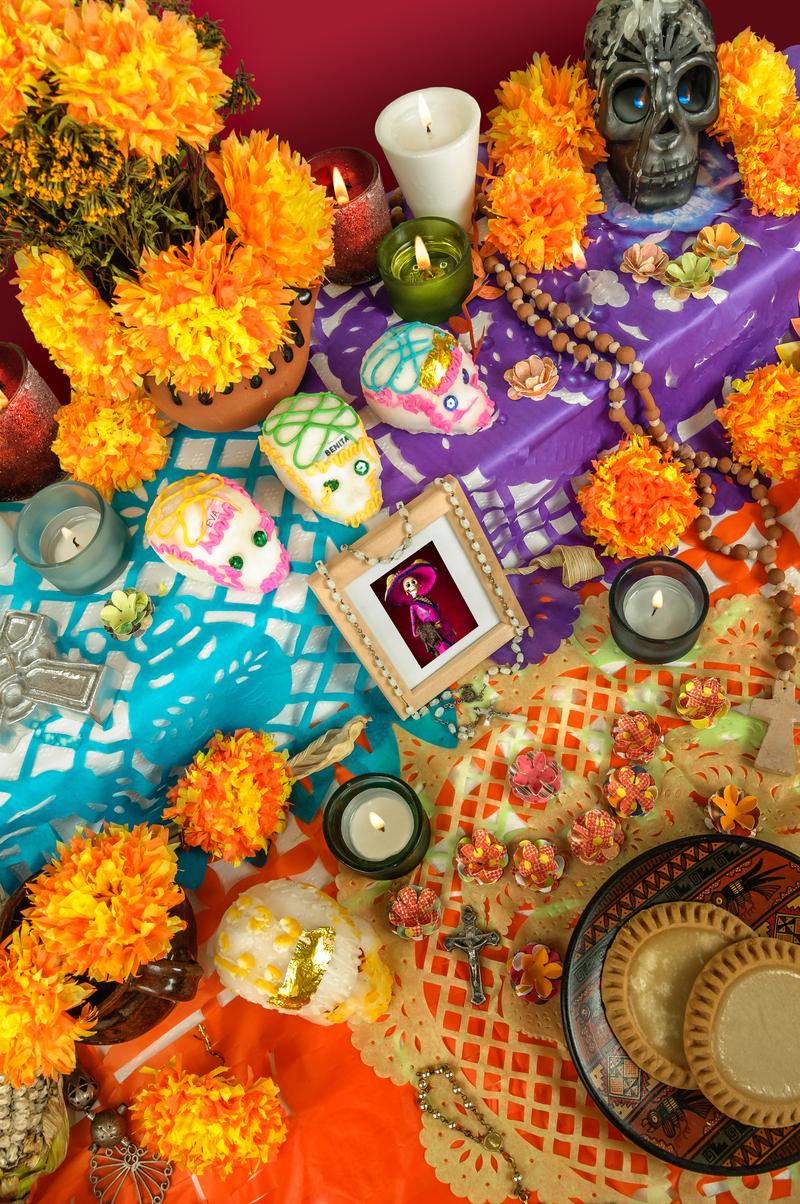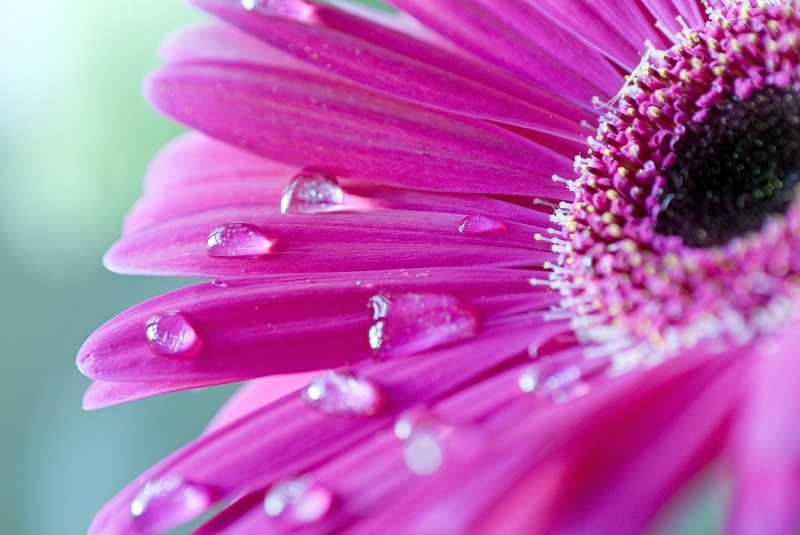Making Poinsettias Last: A Comprehensive Guide
Posted on 06/09/2025
Making Poinsettias Last: A Comprehensive Guide
Welcome to our detailed guide on making poinsettias last well beyond the holiday season! The vibrant bracts and lush green foliage of poinsettia plants (Euphorbia pulcherrima) have become an enduring symbol of winter festivities. Yet, many plant lovers struggle to keep their holiday poinsettia alive and thriving after the new year. In this guide, you'll discover everything you need to know about caring for poinsettias, prolonging their beauty, and encouraging them to bloom again.
Understanding the Poinsettia Plant
The poinsettia, with its striking red, pink, white, or speckled bracts (often mistaken for flowers), is a tropical plant native to Mexico and Central America. True flowers are the tiny yellow centers. Known for their seasonal cheer, poinsettias can survive and even bloom for many years with the right care. Proper poinsettia care goes far beyond simply placing them on the mantle during December.
Why Do Poinsettias Fade So Quickly?
- Improper watering: Overwatering or underwatering is the fastest way to lose your poinsettia.
- Temperature extremes: Drafty windows, heat vents, or sudden chills can shock the plant.
- Low humidity: Poinsettias prefer humid environments; indoor heating quickly dries the air.
- Light issues: Not enough indirect sunlight decreases vitality.
- Lack of continuity: Failing to adapt care post-holidays causes stress and leaf drop.

Step-by-Step: Making Your Poinsettia Last All Season (and Beyond!)
1. Selecting a Healthy Poinsettia
- Choose poinsettias with deep, vibrant color in their bracts and lots of rich green leaves.
- Inspect the flowers (tiny yellow centers); avoid those where these are missing or covered in pollen, which suggests the plant is past its prime.
- Check stems for firmness--not wilted, droopy, or broken.
- Look for hints of pests or disease: sticky residue, yellowed leaves, or odd spots can mean trouble.
2. Transporting Home Safely
Poinsettias are sensitive to the cold. Wrap your plant carefully in paper or plastic if outdoor temperature is below 50?F (10?C). Even brief exposure can cause irreversible leaf drop.
3. Setting Up The Perfect Indoor Environment
- Bright, indirect sunlight: Find a spot near a south or east-facing window. Direct midday sun can scorch leaves; low light leads to faded bracts.
- Temperature: Keep room between 65?F and 75?F (18?C-24?C) during the day, never letting it drop below 60?F (15?C) at night.
- Humidity: If your air is dry, use a tray of water and pebbles beneath the pot or a humidifier nearby.
- Draft-free area: Avoid placing poinsettias near exterior doors, fireplaces, or heat vents.
4. Watering Your Poinsettia Properly
Getting water right is the single biggest key to making your holiday poinsettia last:
- Check soil daily. Water when the top inch is dry to the touch--but never leave roots in standing water!
- Remove decorative foil or punch holes so excess water drains freely.
- Ideally, water at the base, avoiding the leaves and bracts.
- Use lukewarm water for best absorption.
5. Feeding Your Poinsettia
Poinsettias benefit from light feeding, especially if you hope to keep them for future seasons:
- Fertilize monthly with a balanced, water-soluble houseplant fertilizer after the holidays (once bracts begin to fade).
- Stop fertilizing and hold off watering as much during dormancy (mid-spring, see below).
After the Holidays: Long-Term Poinsettia Care
Post-Holiday Poinsettia Maintenance
- When bracts start to lose color (January-March), allow your poinsettia to gradually dry between waterings.
- Some leaves may yellow and drop--don't panic! This is normal as the plant enters dormancy.
- Continue to provide bright, indirect light throughout dormancy.
Poinsettia Pruning & Repotting
To ensure a long-lasting poinsettia, prune it back once the colorful bracts fall and new leaf growth slows.
- Pruning: In early spring (March-April), cut stems back to 4-6 inches above the soil, leaving 1-3 nodes per stem.
- Repotting: When you see new growth (May), gently repot into fresh, well-draining soil. Pick a slightly larger pot if roots are crowded.
Poinsettia Outdoor Summering
With warmer weather, making a poinsettia last sometimes involves outdoor time:
- Gradual acclimation: After final frost, move the plant outdoors for increased light and humidity. Start in shade, increasing sun exposure over several weeks.
- Keep evenly moist and fertilize monthly.
Poinsettia Dormancy & Re-blooming
One of the biggest mysteries for plant owners is how to rebloom a poinsettia. This is entirely possible, but it takes some effort and patience.
- Short daylight, long nights: Poinsettias are "short-day" plants. To trigger blooming, they need at least 14 hours of complete darkness per night for about 8-10 weeks.
- Starting in late September or early October, every evening, place your poinsettia in a dark closet or cover with a box from 5pm to 7am. Move it back to the sunlight each morning.
- During this time, maintain normal watering and feeding routines. Don't let the plant dry out.
- Bracts should begin to color up by early December--just in time for the holidays!
Common Poinsettia Problems & Their Solutions
Yellow Leaves or Sudden Leaf Drop
- Cause: Overwatering, underwatering, root rot, cold drafts, or insufficient light.
- Solution: Adjust your watering routine, ensure the pot drains well, move plant away from cold/hot spots, and increase humidity slightly.
Pale or Fading Bracts
- Cause: Insufficient light, overfertilization, or natural aging past the holiday window.
- Solution: Move to a brighter spot, reduce fertilizer, or accept that it's time for dormancy.
Poinsettia Pests
- Common pests: Whiteflies, aphids, spider mites, and mealybugs.
- Solution: Wipe leaves using a damp cloth, or use insecticidal soap as directed.
Myths and Facts About Poinsettias
-
Myth: Poinsettias are highly poisonous.
Fact: Poinsettias are not deadly toxic. They may cause mild irritation if ingested, but they're generally safe for homes with children and pets. (Still, discourage nibbling!) -
Myth: Poinsettias are disposable plants.
Fact: With proper year-round care, a poinsettia can thrive and bloom beautifully for many years.
Tips for Extending Poinsettia Longevity
- Consistency is key! Sudden changes in temperature, humidity, or care routines can send your plant into shock.
- Prevent root rot: Always remove excess water and ensure the pot has adequate drainage.
- Keep leaves dry: Wet foliage encourages fungus and disease.
- Practice patience: Reblooming and multi-year survival take some effort but are highly rewarding!
Poinsettia Varieties: Choosing the Right Plant for Longevity
Many modern poinsettia hybrids are bred for increased vigor and longer-lasting bracts. Some recommended types for longest color include:
- 'Prestige Red' - Famous for months of vivid color retention.
- 'Jingle Bells' - Spotted bracts with longer life and disease resistance.
- 'Winter Rose' - Compact, curled bracts that last exceptionally long indoors.
- 'Marble' - Pink-over-cream bracts and sturdy stems.
Summary: Your Roadmap to Making Poinsettias Last
- Buy a healthy plant and transport it carefully.
- Immediately set it up in perfect indoor conditions: bright, indirect light, warmth, and humidity.
- Practice gentle, attentive watering and careful monthly feeding after the holidays.
- Prune and repot as needed to encourage strong new growth.
- Acclimate outdoors in summer if possible, then trigger reblooming with controlled darkness in the fall.
- Keep an eye out for pests and respond promptly to any issues.

Frequently Asked Questions About Poinsettia Plant Care
How long can a poinsettia last indoors?
With proper care, poinsettias can thrive for many months, often well into spring or longer. Multi-year reblooming is possible!
What's the best way to water a poinsettia?
Always let the top inch of soil dry out between waterings and make sure your pot has excellent drainage. Avoid letting the roots sit in water.
How do I make my poinsettia turn red again?
Provide 8-10 weeks of total uninterrupted darkness (14+ hours nightly) beginning in early fall.
Why are my poinsettia leaves curling or dropping?
Usually from temperature shock, drafts, or improper watering. Adjust environmental conditions and care parameters as outlined above.
Final Thoughts On Making Poinsettias Last
Making poinsettias last requires a blend of consistency, care, and a touch of seasonal science. Don't treat your plant as a disposable holiday ornament! With the comprehensive poinsettia care guide above, you can enjoy bold holiday color and lush greenery from year to year.
Ready to turn your holiday poinsettia into a thriving, long-lived houseplant? With these expert tips, a little time, and regular attention, anyone can succeed in making poinsettias last.
Keep learning, keep growing, and bring the magic of poinsettias into every season!
Latest Posts
Making Poinsettias Last: A Comprehensive Guide
More than just flowers: 7 facts about tulips
The Enduring Appeal of 12 Long-Lasting Flowers






